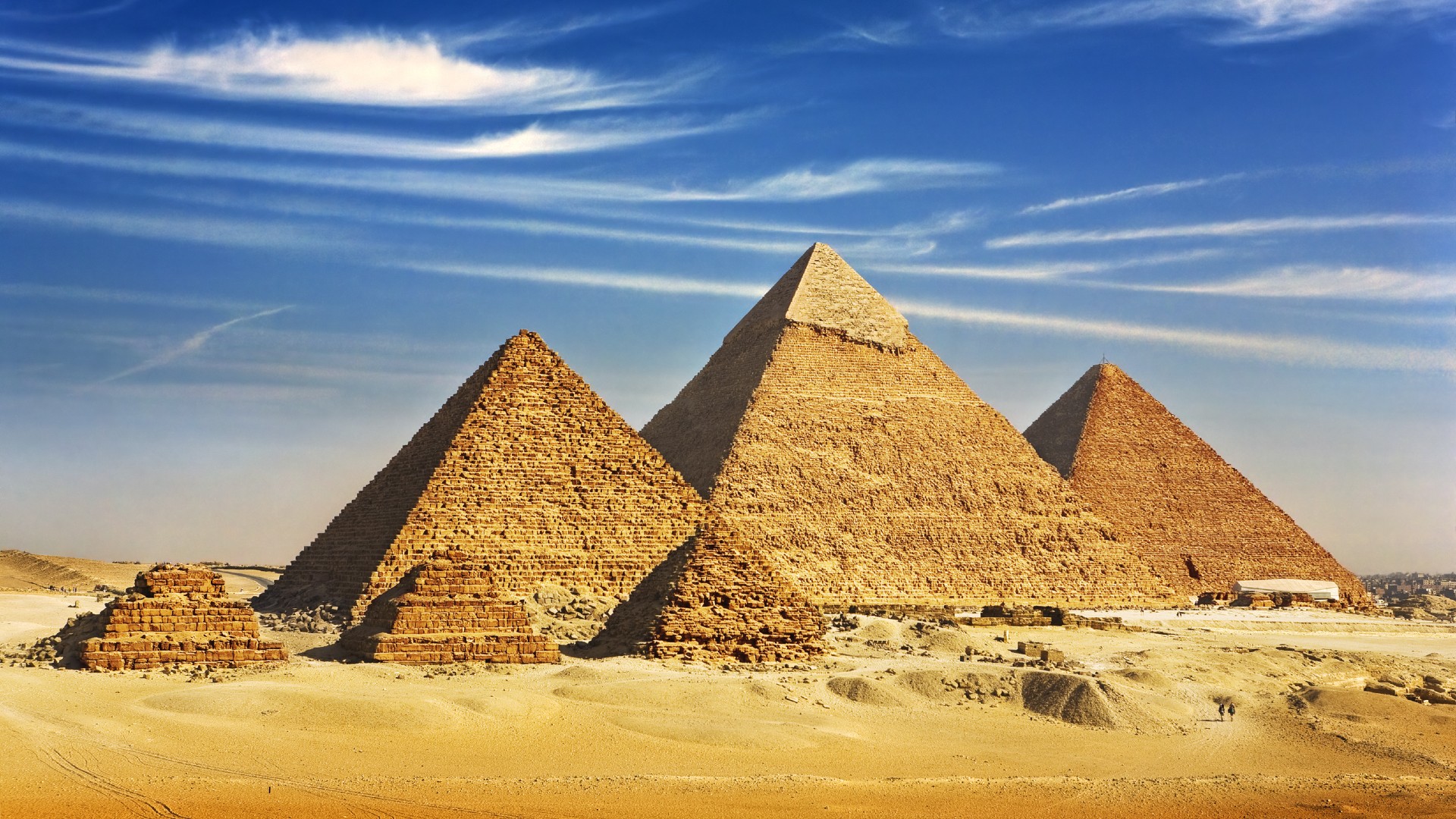-
Table of Contents
“Cairo, Egypt – Unveiling the Ancient Wonders of Pyramids and Sphinx”
Cairo, the capital city of Egypt, is a vibrant metropolis that is rich in history and culture. One of its most iconic landmarks is the Pyramids of Giza, located on the outskirts of the city. These ancient structures, built as tombs for pharaohs, are a testament to the incredible architectural and engineering skills of the ancient Egyptians. The Great Sphinx, a mythical creature with the body of a lion and the head of a human, stands guard near the pyramids, adding to the allure and mystique of this historical site. The Pyramids of Giza and the Sphinx are not only significant historical monuments but also popular tourist attractions that draw visitors from all over the world.
The Historical Significance of the Pyramids of Giza and Sphinx in Cairo, Egypt
Cairo, Egypt is a city steeped in history and culture, with countless landmarks and attractions that draw visitors from all over the world. Among these iconic sites are the Pyramids of Giza and the Sphinx, which hold immense historical significance. These ancient structures have stood the test of time, serving as a testament to the ingenuity and skill of the ancient Egyptians.
The Pyramids of Giza, located on the outskirts of Cairo, are the most famous and well-preserved pyramids in the world. Built as tombs for the pharaohs during the Old Kingdom period, these pyramids were constructed with precision and grandeur. The largest of the three pyramids, known as the Great Pyramid, was built for Pharaoh Khufu and is the oldest of the Seven Wonders of the Ancient World that still exists today.
The pyramids were not only impressive architectural feats but also held great religious and spiritual significance for the ancient Egyptians. They believed that the pharaohs were divine beings who would continue to rule in the afterlife, and the pyramids were designed to ensure their safe passage into the next world. The intricate burial chambers and elaborate burial rituals conducted within these pyramids were a reflection of the Egyptians’ strong belief in the afterlife.
Adjacent to the pyramids stands the enigmatic Sphinx, a mythical creature with the body of a lion and the head of a human. Carved out of a single block of limestone, the Sphinx is believed to represent the pharaoh Khafre, who ruled during the Fourth Dynasty. It is a symbol of strength and power, guarding the entrance to the pyramids and serving as a protector of the pharaoh’s eternal resting place.
The Sphinx, like the pyramids, holds a significant place in Egyptian mythology and religion. It was believed to possess divine powers and was often associated with the sun god Ra. The Sphinx’s face, with its serene expression, is thought to represent the pharaoh’s wisdom and divine connection.
Visiting the Pyramids of Giza and the Sphinx is a truly awe-inspiring experience. As you stand before these ancient structures, you can’t help but marvel at the sheer magnitude of their construction and the mysteries they hold. The pyramids, with their perfectly aligned sides and intricate internal passages, continue to baffle archaeologists and historians alike. The Sphinx, with its enigmatic smile and imposing presence, exudes an air of mystery that captivates all who behold it.
Beyond their historical and cultural significance, the Pyramids of Giza and the Sphinx also serve as a reminder of the enduring legacy of the ancient Egyptians. These structures have withstood the test of time, surviving thousands of years of natural disasters, wars, and human intervention. They stand as a testament to the advanced engineering and architectural skills of the ancient Egyptians, who were able to create such monumental structures without the aid of modern technology.
In conclusion, the Pyramids of Giza and the Sphinx in Cairo, Egypt, hold immense historical significance. They are not only architectural marvels but also symbols of the ancient Egyptians’ religious beliefs and their strong connection to the afterlife. Visiting these iconic landmarks allows us to step back in time and appreciate the ingenuity and skill of the ancient Egyptians, while also marveling at the mysteries that still surround these ancient structures.
Exploring the Architectural Marvels of the Pyramids of Giza and Sphinx in Cairo, Egypt
Cairo, Egypt is a city steeped in history and culture, with countless architectural marvels that have stood the test of time. Among these, the Pyramids of Giza and the Sphinx are undoubtedly the most iconic and awe-inspiring structures. These ancient wonders continue to captivate visitors from around the world, offering a glimpse into the rich heritage of Egypt.
The Pyramids of Giza, located on the outskirts of Cairo, are a testament to the ingenuity and skill of the ancient Egyptians. Built as tombs for the pharaohs, these pyramids have stood tall for over 4,500 years, defying the passage of time. The Great Pyramid of Khufu, the largest of the three pyramids, is a true architectural marvel. Its sheer size and precision in construction leave visitors in awe, wondering how such a feat was accomplished without modern technology.
As you approach the pyramids, the enormity of these structures becomes apparent. The sheer scale of the pyramids is overwhelming, and it is hard to fathom the amount of labor and planning that went into their construction. Each stone block, weighing several tons, was meticulously carved and transported to the site. The precision with which these blocks were fitted together is a testament to the advanced engineering skills of the ancient Egyptians.
The Sphinx, a mythical creature with the body of a lion and the head of a human, stands guard near the pyramids. Carved out of a single block of limestone, the Sphinx is a masterpiece of ancient Egyptian art. Its enigmatic smile and regal presence add to the allure of this iconic monument. The Sphinx has witnessed the rise and fall of civilizations, and its weathered features tell a story of the passage of time.
Exploring the Pyramids of Giza and the Sphinx is like stepping back in time. As you wander through the complex, you can’t help but marvel at the intricate hieroglyphics adorning the walls and the elaborate burial chambers hidden deep within the pyramids. The sense of mystery and wonder that surrounds these ancient structures is palpable, and it is easy to get lost in the magic of the past.
Visiting the Pyramids of Giza and the Sphinx is an experience that should not be missed. The grandeur and majesty of these architectural wonders are unparalleled, and they offer a unique insight into the ancient Egyptian civilization. Whether you are a history enthusiast or simply someone who appreciates the beauty of ancient architecture, a visit to Cairo’s pyramids is sure to leave a lasting impression.
In conclusion, the Pyramids of Giza and the Sphinx in Cairo, Egypt are architectural marvels that continue to captivate visitors with their grandeur and mystery. These ancient structures stand as a testament to the ingenuity and skill of the ancient Egyptians, and exploring them is like stepping back in time. The awe-inspiring size and precision of the pyramids, coupled with the enigmatic presence of the Sphinx, make for an unforgettable experience. A visit to Cairo’s pyramids is a journey into the heart of ancient Egypt, where history and culture come alive.
Unveiling the Mysteries Surrounding the Pyramids of Giza and Sphinx in Cairo, Egypt
Cairo, Egypt is a city steeped in history and mystery. One of its most famous attractions is the Pyramids of Giza and the Sphinx. These ancient structures have captivated the imagination of people for centuries, and their secrets continue to baffle archaeologists and historians alike.
The Pyramids of Giza are a testament to the ingenuity and skill of the ancient Egyptians. Built as tombs for the pharaohs, these massive structures have stood the test of time. The largest of the three pyramids, known as the Great Pyramid, was built for Pharaoh Khufu and is the oldest and largest of the Seven Wonders of the Ancient World.
The construction of the pyramids is a marvel in itself. The stones used to build these structures were quarried from nearby areas and transported to the site. The precision with which the stones were cut and fitted together is astounding, considering the limited tools and technology available at the time. It is believed that thousands of workers were involved in the construction, and the process took several decades to complete.
One of the most intriguing aspects of the pyramids is their alignment with the stars. The sides of the pyramids are oriented to the cardinal points of the compass, with the Great Pyramid aligning almost perfectly with true north. This precision suggests a deep understanding of astronomy and a belief in the connection between the pharaohs and the gods.
Adjacent to the pyramids stands the enigmatic Sphinx. This colossal statue, with the body of a lion and the head of a human, has long been a symbol of ancient Egypt. The Sphinx is believed to represent the pharaoh Khafre, who ruled during the Fourth Dynasty. Its purpose and meaning, however, remain a subject of debate among scholars.
The Sphinx has suffered significant damage over the centuries, with its nose and beard being lost to time. Despite this, its imposing presence still commands awe and admiration. The Sphinx is surrounded by various theories and legends, including the belief that it guards hidden chambers and secret passages beneath the Giza Plateau.
The mysteries surrounding the pyramids and the Sphinx have fueled countless theories and speculations. Some believe that the pyramids were built by extraterrestrial beings, while others argue that they were constructed using advanced ancient technologies that have since been lost. These theories, although intriguing, lack concrete evidence and are often dismissed by mainstream archaeologists.
In recent years, new discoveries and advancements in technology have shed some light on the secrets of the pyramids. Archaeologists have used ground-penetrating radar and other non-invasive techniques to explore the interior of the structures. These studies have revealed hidden chambers and passageways, providing valuable insights into the construction and purpose of the pyramids.
Visiting the Pyramids of Giza and the Sphinx is a truly awe-inspiring experience. Standing in the shadow of these ancient wonders, one can’t help but feel a sense of wonder and admiration for the ancient Egyptians who built them. The mysteries surrounding these structures continue to fascinate and intrigue, reminding us of the enduring legacy of one of the world’s greatest civilizations.In conclusion, Cairo, Egypt is home to the iconic Pyramids of Giza and Sphinx. These ancient structures are not only significant historical landmarks but also major tourist attractions. The Pyramids of Giza, including the Great Pyramid of Khufu, are among the Seven Wonders of the Ancient World and showcase the architectural prowess of the ancient Egyptians. The Sphinx, a mythical creature with the body of a lion and the head of a human, stands as a symbol of strength and mystery. Together, these ancient wonders offer visitors a glimpse into the rich history and cultural heritage of Egypt.





